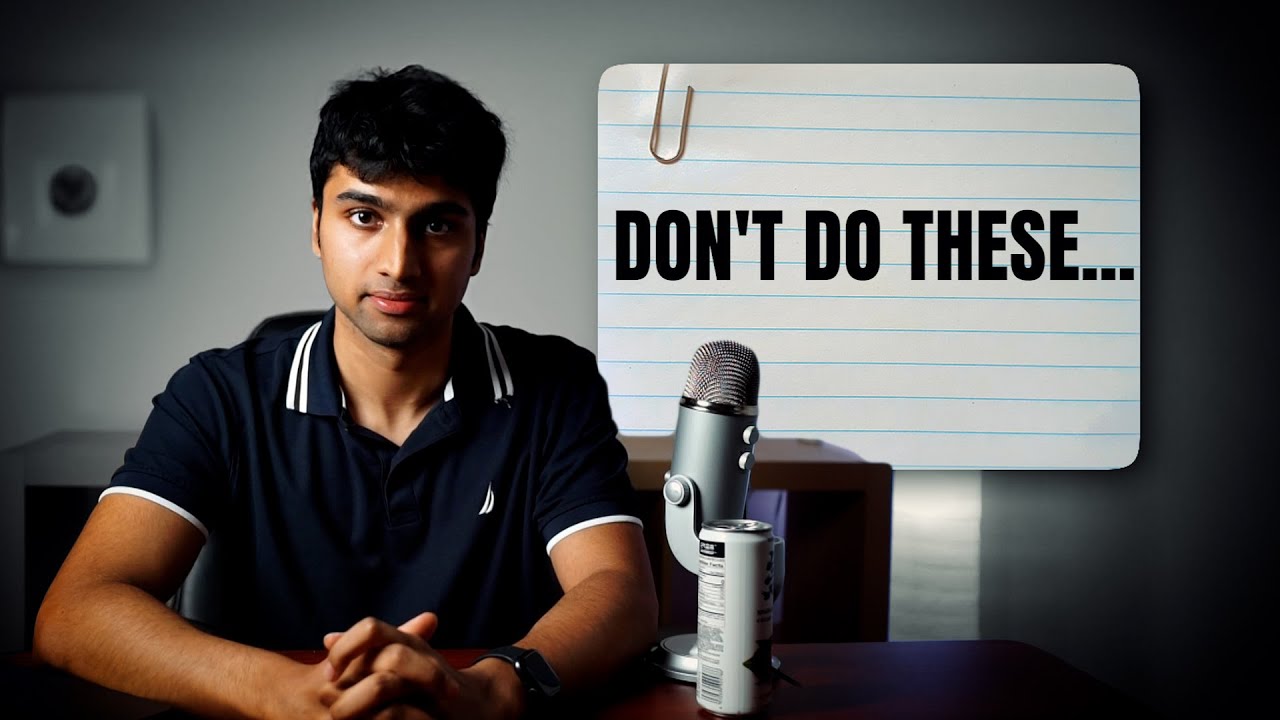Are You STILL Lubricating Your Bike Chain Incorrectly?
Summary
TLDRThis video covers common mistakes in bike chain lubrication and offers advice on how to avoid them. It explains the importance of shaking lubricants, allowing dry lube time to evaporate, and cleaning chains regularly, especially when using wet lube, which tends to attract dirt. The video emphasizes the need to avoid over-lubricating or applying lube on dirty chains, which can accelerate drivetrain wear. Proper lubrication involves cleaning the chain, applying the lube to individual rollers, and wiping off excess. Different lubes have different properties, so it's essential to choose the right one and follow manufacturer recommendations.
Takeaways
- 🚲 Always shake your chain lubricant before use, as it helps mix the wax (for dry lube) or oil (for wet lube) with the liquid carrier.
- ⌛ Dry lube requires time to evaporate after application, so avoid applying it right before a ride to prevent attracting dust.
- 🌧️ Wet lube, being oil-based, doesn't need time to dry and can be used right away. It's more water-resistant but attracts more dirt.
- 🧼 Clean your chain regularly if using wet lube, as it picks up dirt and can create a grinding paste that damages your drivetrain.
- 🚿 Never apply lubricant to a dirty chain. Doing so traps dirt, creating a grinding effect that wears down the drivetrain.
- 🆕 Clean new chains before installation to remove factory grease, which attracts dirt and grime, leading to a buildup of black gunk.
- 🔧 Different lubricants behave differently with dirt, so if you notice excessive dirt buildup, consider switching to a higher-quality lube.
- 🎯 Focus lubrication on the chain rollers (the moving parts), not the outer chain links, as excess lube on the outside will attract dirt.
- 💧 Use minimal lube, applying only one drop per roller, then wipe off any excess to prevent attracting dirt.
- ✅ The best practice for chain lubrication: start with a clean chain, apply lube to individual rollers, and follow manufacturer recommendations for drying time if using dry lube.
Q & A
What is the main issue with not shaking your chain lubricant before use?
-If you don't shake the lubricant, the wax and the liquid carrier may not mix properly, causing you to apply only the carrier to your chain without the lubricating wax, which diminishes the lubricant's effectiveness.
Why shouldn't you apply dry lube right before a bike ride?
-Dry lube needs time for the liquid carrier to evaporate, leaving the lubricating wax on the chain. If applied right before a ride, the liquid can gather dust and dirt, reducing its effectiveness in protecting the chain.
How is wet lube different from dry lube in terms of application?
-Wet lube is oil-based and doesn’t require drying time like dry lube. You can apply it and ride immediately, and it also offers better water resistance for wet conditions.
What is a common mistake when using wet lube?
-A common mistake is not cleaning the chain often enough. Wet lube can attract dirt, grit, and mud, which can create a grinding paste that wears down the drivetrain if not cleaned regularly.
Why is it important to apply lubricant to a clean chain?
-Applying lubricant to a dirty chain can trap dust and dirt, creating a grinding paste that accelerates drivetrain wear. A clean chain ensures the lubricant can properly protect the chain.
Why should you clean a new chain before applying lubricant?
-New chains often come with factory grease, which protects the chain but also attracts dirt and grime. Cleaning this grease off before applying your preferred lubricant prevents dirt buildup.
What could cause black gunk buildup on a chain, and how can you prevent it?
-Black gunk buildup could be caused by not cleaning the chain frequently enough or using low-quality lubricant that attracts dirt. Regular cleaning and using a high-quality lube can prevent this issue.
Is it necessary to lubricate the outside of the chain?
-No, only the rollers of the chain need lubrication. Excess lubricant on the outside of the chain should be wiped off to prevent it from attracting dirt and dust.
How should you apply lubricant to each roller of the chain?
-Shake the lubricant well, apply one drop to each roller of the chain while turning the crank backward, and make sure to wipe off any excess lubricant from the outer chain plates.
How often should you check and relubricate your chain?
-You should regularly check your chain to see if it needs cleaning or relubrication. If the chain becomes dirty, clean it and reapply lubricant to ensure smooth operation.
Outlines

This section is available to paid users only. Please upgrade to access this part.
Upgrade NowMindmap

This section is available to paid users only. Please upgrade to access this part.
Upgrade NowKeywords

This section is available to paid users only. Please upgrade to access this part.
Upgrade NowHighlights

This section is available to paid users only. Please upgrade to access this part.
Upgrade NowTranscripts

This section is available to paid users only. Please upgrade to access this part.
Upgrade NowBrowse More Related Video

Typische Fouten die Beginnende Wielrenners Maken

You NEED to AVOID these Mistakes as a Data Analyst | raw truth

8 Fashion Mistakes That Make You Look Bad

Most Common Brake Installation Mistakes!

Presentation 8b: Linguistic Pitfalls (Phil 1230: Reasoning and Critical Thinking)

MY Sponsorship Update-2021 - AOR, BIOMETRICS, MEDICAL, PRE ARRIVAL, LINK YOUR APPLICATION PR CANADA
5.0 / 5 (0 votes)